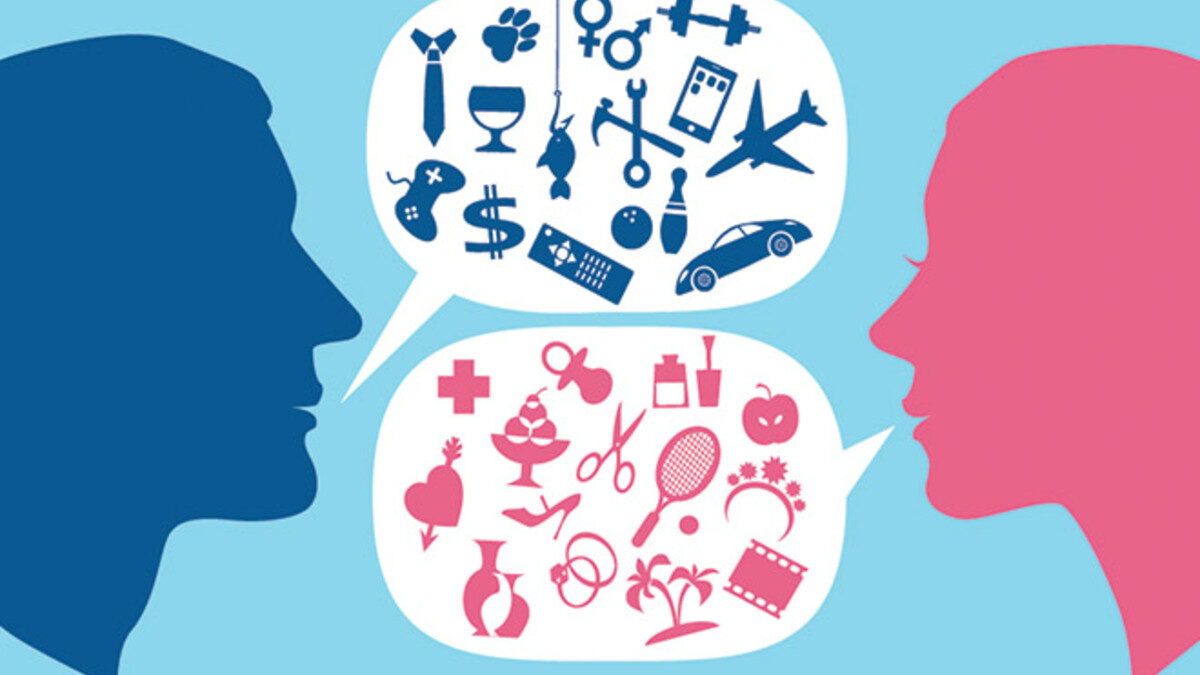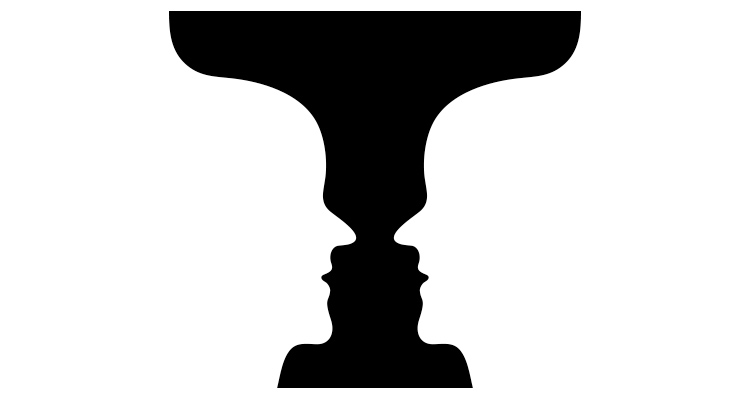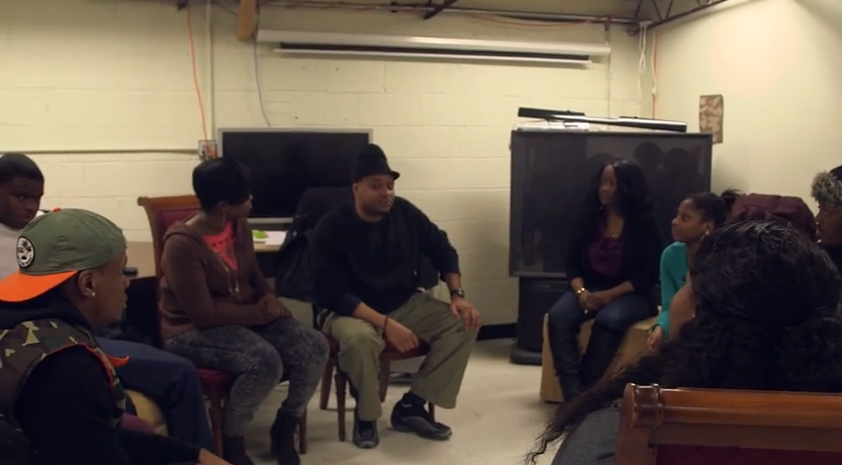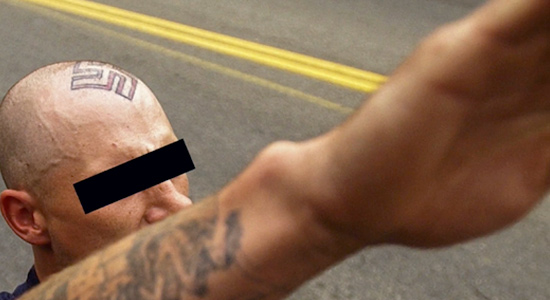Educator Tools

 Ask yourself:
Ask yourself:
- Why do we have “blind spots” when it comes to judging people?
- How do these harden into stereotypes that often turn into prejudices?
- How and why do prejudices turn into discrimination?

Please select one of the four videos from Choose Your Voice:
Bursting the Voices of Stereotyping
Voices from the Past
Voices from the Present
Choose Your Voice
ACTION 1
Think
What do you see?

Do you see a vase, or two faces looking at each other, both, or neither?
What does the following quotation mean?
“There are none so blind as those who will not see.”
What is the lesson of this parable?
“A policeman sees a drunk man searching for something under a streetlight and asks what the drunk has lost. He says he lost his keys and they both look under the streetlight together. After a few minutes the policeman asks if he is sure he lost them here, and the drunk replies, no, that he lost them in the park. The policeman asks why he is searching here, and the drunk replies, “this is where the light is.”
Source: David H. Freedman, Wrong: Why Experts Keep Failing Us (London: Little, Brown and Company, 2010).
These three questions illustrate some of the challenges we have when we try to understand our world.
For some people, the negative consequences of treating people inhumanely have looked something like this:

In the case of antisemitism, the historian Raul Hilberg wrote, “The missionaries of Christianity had said in effect: You have no right to live among us as Jews. The secular rulers who followed had proclaimed: You have no right to live among us. The German Nazis at last decreed: You have no right to live.” Raul Hilberg, The Destruction of the European Jews New York: Holmes & Meier, 1985, 9.
How do these stages match the chart above?
Get ready to explore some of the psychological, sociological, and anthropological underpinnings of these actions. These underpinnings are actually the negative consequences of a natural process that begins with perceptions and moves from thoughts to actions.

Developing Perceptions About Our World
We usually make sense of things by organizing ideas and concepts from information we absorb through our senses: mental constructs or categories humans represent through words or phrases that give the grouped information a “label.” Concepts are abstractions and represent reality, but individual examples of concepts do exist. Organizing our experiences into concept groupings makes it easier to deal with them. Imagine the confusion if we could not make sense of our world?
For example there may be as many as 7.5 million distinguishable colours, but we can only manage them when we group them into a dozen or so categories [Bruner, J.S., Going Beyond the Information Given (New York: Norton, 1973)]. Thus concepts provide the intellectual categories or lenses through which we organize and make sense of the world. The processes of organizing our realities into concepts involve thinking and communicating on many levels.
The ability to organize people, ideas, objects, and events into concepts is important in learning. Memory of the meaning of an idea or event lasts longer than the memory of the specific event itself. Organizing knowledge into categories or concepts makes it easier to store such knowledge in long-term memory. More importantly, for teachers and students, conceptual understanding makes it easier to retrieve knowledge we need, kind of like a mental filing system.
While concepts are a natural part of how we search for meaning and can be helpful in the case of organizing colours (or smells or sounds), they can get us into trouble when they are not based on facts or clear evidence. If our perceptions are not based on reality and if they are harmful to others or to ourselves, then we need to find ways to change them as should the drunk man, above, if he is to find his keys. But too often perceptions harden into judgments.
Making Judgments
We normally collect information and make a quick judgment and then seek information that supports this belief. It is more comforting to find ideas that support our beliefs than to grapple with those that do not. Judgments are more easily made than changed once our minds have been “made up” about a subject. This has been a survival tool throughout history. For example, if a child touches a flame and gets burned, he or she will be very careful before doing it again.
But what if the information or stimulus is not so clear, as in the image that began this overview?
In these cases we usually make judgments based on prior knowledge and experience. And in our global world, different people may make different judgments based on a similar initial perception. The following example (as well as the two images above) comes from Morton and McBride (1977).
In the early dawn light, a farmer sees a large furry animal with four feet and a long tail in the distance. The animal is eating something on the ground.
- If the farmer is in Saskatchewan, he or she might think it is a cow or a horse.
- If the farmer is in Tanzania (East Africa), he or she might think it is a lion or a zebra.
How do you account for the different judgments?
When our judgments harden despite evidence to the contrary, they create “cognitive dissonance.” It is easier to ignore ideas that challenge our prior thinking than to struggle to change our beliefs. Researchers call this “confirmation bias.”
Imagine if in fact a lion was in the Saskatchewan field. How might confirmation bias result in something bad happening if the farmer went out to milk the “cow”?
From Judgment to Stereotype
Stereotype
- A widely held oversimplified image or idea of a particular type of person or thing.
- In social psychology, a stereotype is a generalized belief about a particular category of people. It is an expectation that people might have about every person in a particular group regardless of individual differences.
When judgments are based on misinformation, stereotypes can develop. When we unfairly apply stereotypes to groups of people, regardless of individual differences in every group, we are “discriminating.”
From Judgment to Action
The chapters in this unit show how this process affects groups of people. The cyber bullying case in unit 6 shows how it plays out with individuals.
ACTION 2
Think
What Have You Learned?
As you study the cases, record “blind spots.”
Note:
- Who committed them?
- What stereotypes are revealed?
- What actions are taken that represent discrimination?
- Which actions move from discrimination to segregation and beyond?
Be honest with yourself and record your own blind spots and unfair biases that you hold towards various groups—we ALL have them.
ACTION 3
Do
In a group develop a thesis statement on a current issue relating to prejudice and discrimination as reported in the media, focusing on Canada, the United States, or globally.
Every effort has been made to gain permission from copyright holders to reproduce borrowed material. The publishers apologize for any errors and will be pleased to rectify them in subsequent reprints and website programming
Educator Tools



